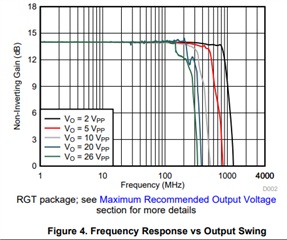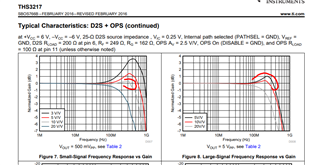Other Parts Discussed in Thread: OPA2695, , THS3491, THS3217
Hello,
I am trying to design an amplifier for an ultrasound pulse/receive system with an output swing of at least 26 Vp-p, although something closer to 40 Vp-p would be nice, across a range of frequencies from 25 MHz to 75 MHz. The input signal is provided by a DAC/DDS and will likely be in the 100s of mV, therefore the overall amplifier gain must be around ~40 dB.
My intention is to use something like the OPA2695 as a pre-amplifier before the final output stage, however I've struggled to find an amplifier capable of providing any substantial gain at these frequencies when the output voltage swing is in the 10s of volts. After a lengthy parametric search, I believe the THS3001 may be capable of meeting my minimum requirements, however it is not entirely clear from the datasheet and I was hoping someone may be able to provide a bit of clarification.
From the THS3001 datasheet, the electrical characteristics table states a typical voltage swing of either ±12.8 V or ±13.1 V for different values of RL. However, in the typical characteristics section, each of the Figures appear to have been recorded with inputs in the mV range and for very low gain, even those where the Vs span is 30 V. Is it possible to use this device with larger inputs signals and similar or greater levels of gain? And is this device capable of the stated ~25 V output span when operating at frequencies up to 75 MHz?
Thanks,
Lee



